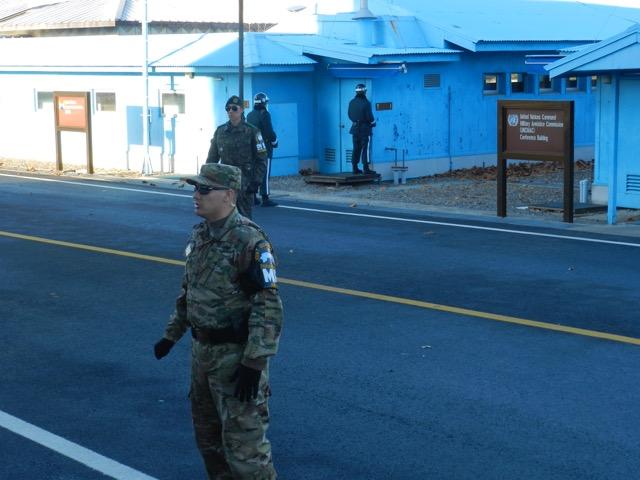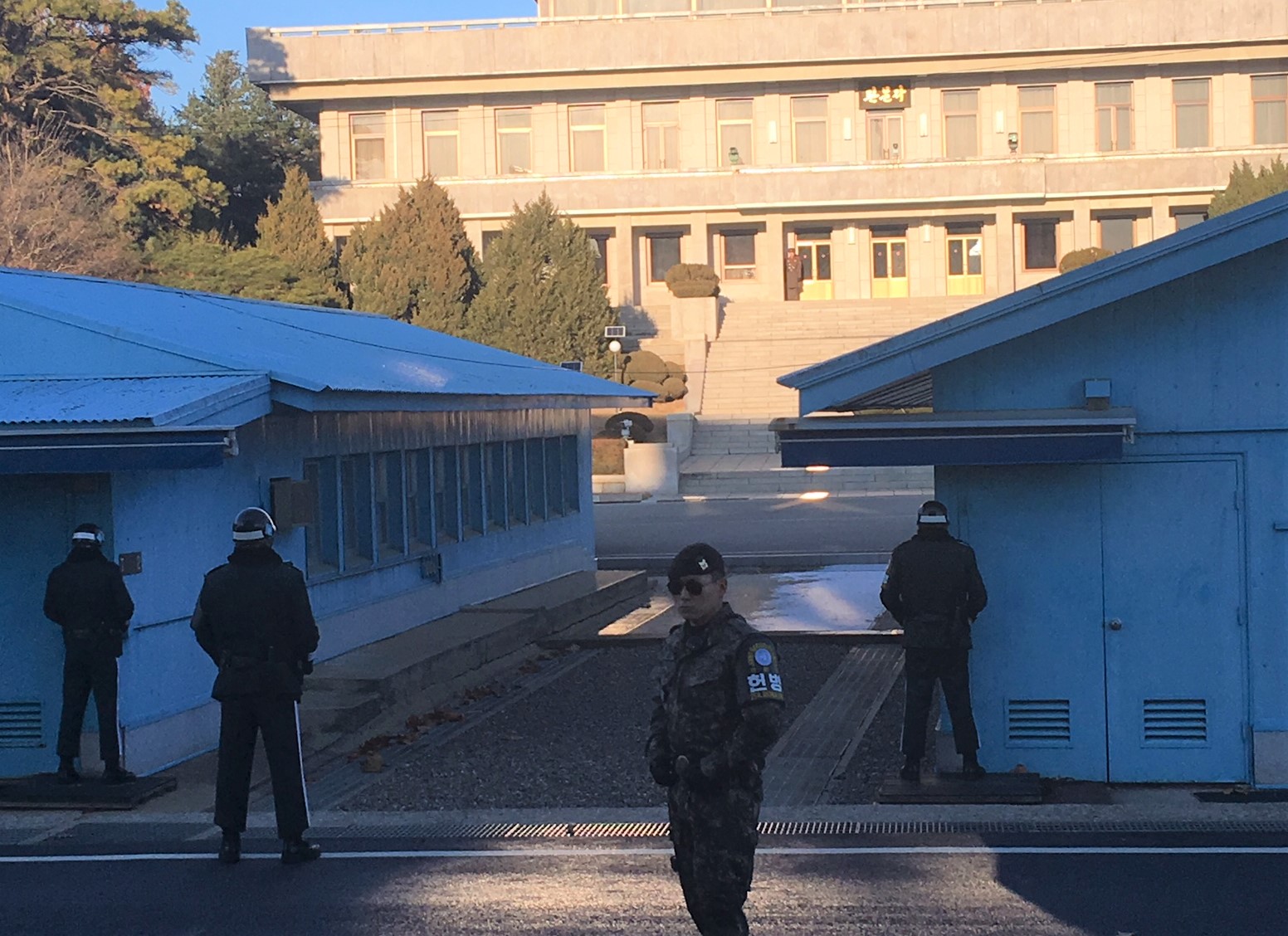A Trip to the JSA
It’s one of the saddest and most intimidating and dangerous places on earth. The Joint Security Area (JSA), or “Truce Village” as it’s frequently referred to, is a complex of small buildings that literally sits on the border of North and South Korea. Five of the buildings, collectively called “Conference Row,” actually straddle the line (the military demarcation line, or MDL) between the two countries. As strange as it sounds, tourists walking inside a large conference room in one of the buildings actually cross into North Korea. Which I did, on Friday.
To make things even more bizarre - and menacing - for visitors, the “Village" is located in what's considered the most heavily mined and guarded flash points in the world: the DMZ. Ironically the DMZ, or “Demilitarized" Zone, is anything but.
The 160-mile line that stretches across the Korean peninsula has armies on both sides- complete with thousands of artillery pieces, rockets, tanks, and planes - ready to launch an attack or repel an invasion. Tension in and around the DMZ is palpable. You feel it and see it everywhere. And it’s disturbing.

A US Army soldier briefs on what to do and not to do before entering the building behind him.
Our tour this past Friday was led by Steve Tharp, one of the DMZ's most experienced and knowledgeable guides. Tharp, a retired US Army Lt. Col., speaks Korean and Chinese and has lived in Korea for 28 years.
Tharp has a plethora of fascinating stories about his years of service on the DMZ as a soldier and member of the UN Armistice Commission. During his Army career and time as a civilian working for United States Forces Korea (USFK), he established himself as one of the leading experts on topics related to the JSA, armistice talks, and military operations along the DMZ.
At one stop during our visit, we donned yellow construction helmets and descended 240 feet into one of four infiltration tunnels built by North Koreans to sneak troops under the DMZ. The tunnel, located less than 35 miles from Seoul, was discovered in 1978.

Diagram of the route taken by the North Korean soldier who recently defected. (Photo credit: Arirang)
We also saw the exact spot where just a few weeks ago a North Korean soldier defected. As we stood on the steps of a building that overlooks the infamous blue buildings of Conference Row, we could see a North Korean soldier peering down on us from across the border. It was hard to not feel sorry for him. I wondered how much different his life is from the US and South Korean troops doing the same job on this side of the JSA.
At Mt. Dora Observatory, we were able to peer into North Korea. It was a sunny day, and the North Korean city of Kaesong was clearly visible. As we listened to massive speakers on both sides of the DMZ blaring propaganda messages and news, we took photos and used high-powered binoculars to focus on key terrain features and buildings.
It felt almost voyeuristic, as if we were rubber-necking at a multi-car pileup on the interstate. The suffering of the North Korean people is one of the world’s great tragedies, but it is also one of the reasons that tens of thousands of tourists visit the DMZ every year.

A view of Kaesong, North Korea.
It was a memorable and sobering visit and a powerful reminder that vigilance along the DMZ and the entire peninsula is paramount to freedom and peace. As we get closer to the holidays in the US, it’s also a reminder that US servicemen and women around the world won’t be home for Christmas.
A special thanks to Korea University's Korean War Archive for sponsoring the event and to Professors Min and Weathersby for inviting us on the tour.







